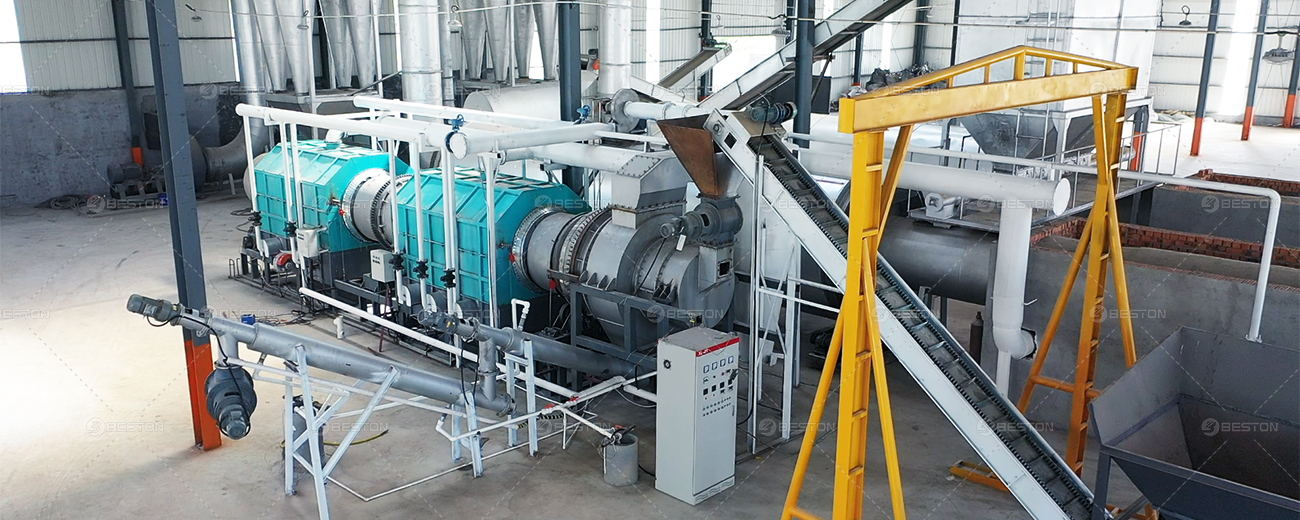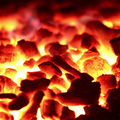Enhancing the production rate of a biochar machine requires an integrated approach that begins with feedstock preparation and ends with intelligent downstream handling. Incremental upgrades in each stage compound into substantial gains in overall tonnage per hour.
Optimise Feedstock Characteristics
The carbonisation rate hinges on thermal penetration of the biomass particles in biochar machine.
-
Particle size calibration – Chips or pellets between 10 mm and 25 mm expose enough surface area for rapid devolatilisation without producing fines that impede gas flow. Oversized chunks create cold cores; excessive dust blocks augers and cyclones.
-
Moisture standardisation – Drying feed to ≤12 % moisture reduces the latent heat burden. Waste-heat belt dryers or flash dryers powered by syngas slash pre-treatment time and free reactor capacity for carbonisation rather than water evaporation.
-
Bulk density improvement – Briquetting sawdust or husk residues increases conveyor loading efficiency and stabilises reactor residence time.

Fine-Tune Thermal Regime
Throughput rises when the biochar pyrolysis reactor operates at the thermal sweet spot for the selected biomass.
-
Zoned temperature control allows the pre-heat, cracking, and carbonisation sections to run at individual set-points (350 °C, 450 °C, 600 °C, respectively). This staged ramp curtails tar re-condensation and shortens total residence by 8–12 %.
-
High-emissivity refractory coatings accelerate radiative heat transfer, boosting internal wall temperatures without extra burner load.
-
Hot-gas recirculation returning flue gases to the initial drying section extracts residual energy and creates a quasi-counter-current configuration, elevating thermal efficiency above 70 %.
Deploy Continuous Feeding and Discharge
Batch pauses erode productivity.
-
Variable-speed screw feeders regulate mass flow in real time. Connecting load-cell data to a PLC closes the loop, maintaining constant bed height and preventing channel formation.
-
Sealed double-valve char removal eliminates air ingress while permitting uninterrupted char discharge. This design also preserves reactor pressure stability, mitigating brief flameouts that otherwise necessitate cooldown.
Recover and Cascade Energy
The non-condensable fraction of pyrolysis gas carries 10–12 MJ Nm⁻³ of calorific value.
-
Routing that gas through regenerative burners meets up to 80 % of reactor heat demand.
-
Installing a micro-turbine or ORC module transforms surplus gas into auxiliary electricity, powering grinders and conveyors and trimming grid reliance.
-
Heat exchangers can divert 150–200 kWth to feedstock dryers, further accelerating throughput by returning drier material to the feed hopper.
Minimise Fouling and Downtime
Every unplanned stoppage cancels incremental gains.
-
Automated air-pulse cleaning of cyclones clears condensable aerosols before they solidify.
-
Ceramic-lined screw flights resist abrasion from high-silica biomass such as rice husk, extending maintenance intervals.
-
A predictive analytics suite that synthesises temperature drift, motor current, and vibration data can forecast seal wear or refractory degradation weeks in advance, enabling scheduled micro-shutdowns instead of catastrophic outages.
Leverage Catalytic or Additive Techniques
Selective use of innocuous additives can accelerate devolatilisation kinetics.
-
Alkali dopants (e.g., K₂CO₃ at 1 wt %) lower activation energy for cellulose cracking, improving vapour release rates and shortening residence time.
-
Steam or CO₂ injection during peak temperature promotes in-situ activation, increasing pore development without sacrificing throughput.
Upgrade Post-Processing Logistics
Rapid cooling and classification free reactor capacity for the next biomass charge.
-
Closed, water-cooled screw chillers bring char below 200 °C within minutes, avoiding bottlenecks in the discharge chute.
-
Inline screening and pneumatic conveyance move product to storage silos without forklift delays, synchronising plant rhythm.





